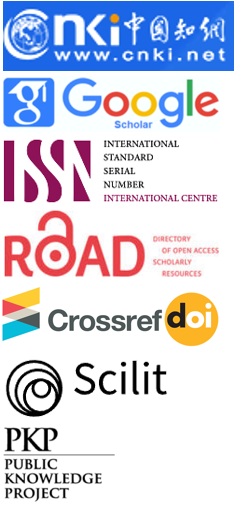Analysis of the Construction and Application of the Care-4D Model of Medical Communication Oriented to Public Reception Needs
DOI:
https://doi.org/10.71204/20yjdm28Keywords:
Popularization of Science Communication, 5W Theory, Healthy China Initiative, Medical CommunicationsAbstract
Based on the classic 5W theoretical framework of communication studies, this study systematically analyzes the multidimensional challenges faced in medical science popularization communication and thereby constructs the CARE-4D dynamic closed-loop medical communication model. This model aims to address the gaps in traditional science popularization models, which are characterized by one-way communication, simplified effectiveness, and the absence of cultural dimensions, and thus struggle to meet the public health needs of the precision medicine era. The model innovatively proposes four core mechanisms: scenario-driven, four-tier audience segmentation, dynamic response, and four-dimensional effect evaluation. It deeply integrates time, space, cognition, and emotion-enhanced strategies to form a multi-stakeholder collaborative, all-scenario-covered science popularization closed-loop system. The model breaks through the traditional linear communication paradigm, providing a theoretical tool that combines scientific authority and cultural adaptability for biomedical knowledge popularization. It holds significant methodological value for advancing precision science popularization practices under the Healthy China Initiative.
References
Central Committee of the Communist Party of China, & State Council of the People's Republic of China. (2017). “Healthy China 2030” planning outline [In Chinese]. Chinese Journal of Practical Rural Doctors, 24(7), 1–12.
Chou, W. Y. S., Hunt, Y. M., Beckjord, E. B., Moser, R. P., & Hesse, B. W. (2009). Social media use in the United States: Implications for health communication. Journal of Medical Internet Research, 11(4), e48. https://doi.org/10.2196/jmir.1249
Lin, Z. (1996). Research on the theoretical framework of new traditional studies: An evaluation of the merits and limitations of Lasswell's 5W communication model [In Chinese]. University of Journalism.
Lv, X. (2013). Research on public health communication in the context of digital publishing (Doctoral dissertation, Shaanxi Normal University).
Mills, B., & Barlow, D. M. (2014). Harold D. Lasswell reading: Lasswell, H. D. (1948). The structure and function of communication in society. In L. Bryson (Ed.), The communication of ideas. New York: Harper and Brothers. .
Sapienza, Z. S., Iyer, N., & Veenstra, A. S. (2018). Reading Lasswell's model of communication backward: Three scholarly misconceptions. In Advances in Foundational Mass Communication Theories (pp. 38-61). Routledge.
Wang, W., & Shi, G. (2018). The importance of evidence-based medicine communication for rational medical treatment. Chinese Journal of Evidence-Based Medicine, 18(9), 4.
Yilidana, Y. (2021). Research on Laswell's communication theory (Doctoral dissertation, Xinjiang University). China National Knowledge Infrastructure (CNKI).
Yu, G., & Lu, J. (2011). Current status, issues, and future trends in health communication research in China. In 2011 Annual China Health Communication Conference Excellent Papers Collection.
Zalpour, A., Geraei, E., Hashemian, M., & others. (2025). Health information disorders: Types and origins in health communication – A qualitative study. Journal of Education and Health Promotion, 14(1), e18444–e18479.
Downloads
Published
Issue
Section
Categories
License
Copyright (c) 2025 Yueyang Jiang, Tong Wu, Jianing Liang, Wenjie Cai, Yangyang Zhang (Author)

This work is licensed under a Creative Commons Attribution 4.0 International License.
All articles published in this journal are licensed under the Creative Commons Attribution 4.0 International License (CC BY 4.0). This license permits unrestricted use, distribution, and reproduction in any medium, provided the original author(s) and source are properly credited. Authors retain copyright of their work, and readers are free to copy, share, adapt, and build upon the material for any purpose, including commercial use, as long as appropriate attribution is given.





